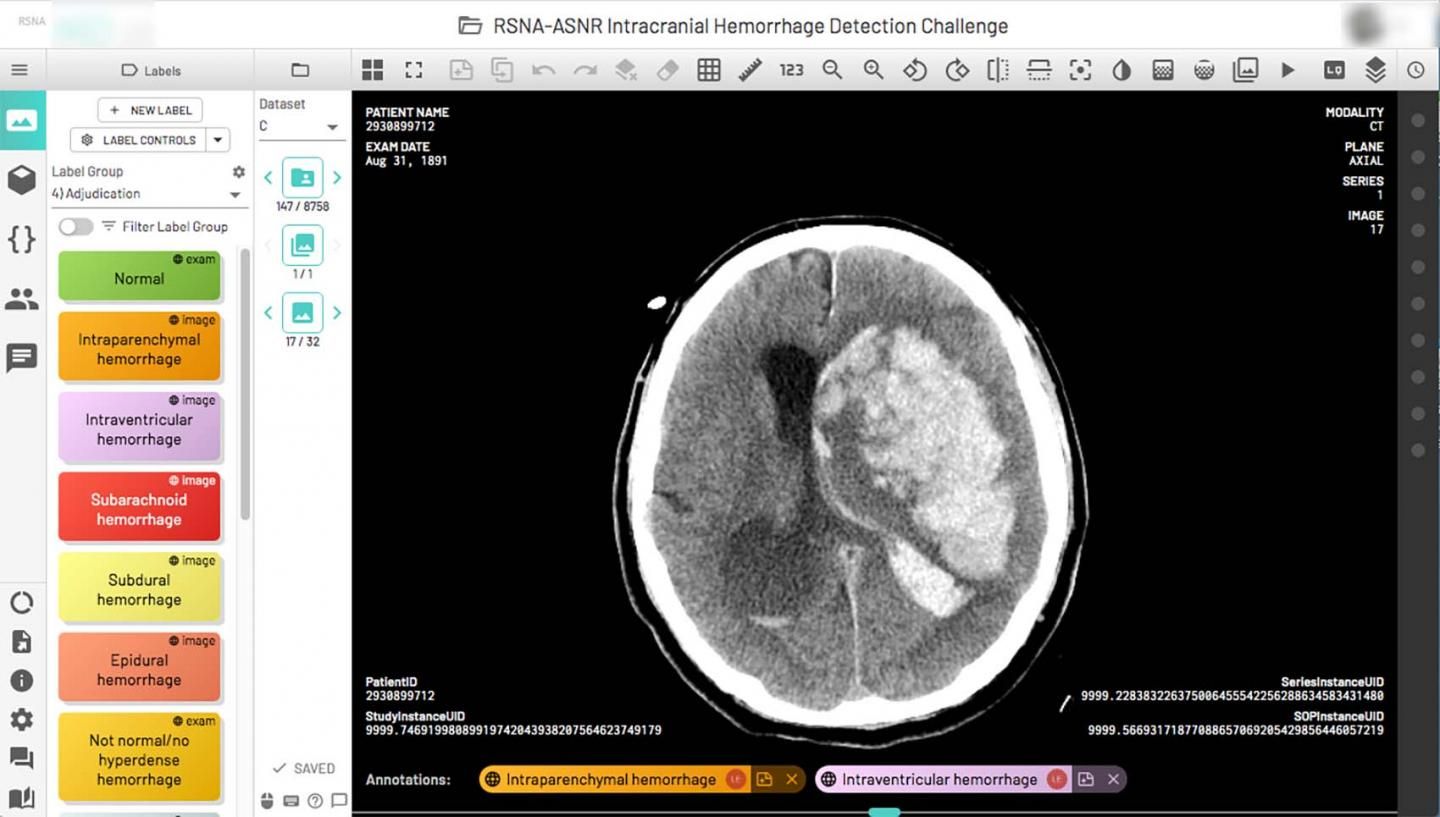RSNA Challenge Opens Door for Brain Hemorrhage Machine Learning
Together, RSNA and the American Society of Neuroradiology launched the largest collection of expert-annotated brain hemorrhage CT scans.

Pinpointing a brain hemorrhage on a CT scan could get significantly easier in the near future thanks to the creation of a new database that has compiled the largest public collection of expert-annotated images collected to-date.
This dataset, stemming from the Radiological Society of North American (RSNA) Artificial Intelligence (AI) challenge, is the result of a collaboration between two medical societies (RSNA and the American Society of Neuroradiology (ASNR)) and more than 60 volunteer neuroradiologists. Details about the dataset were published today in Radiology: Artificial Intelligence.
The goal of both the challenge and the dataset, according to initiative leaders, is to accelerate the development of machine learning algorithms that can help detect and characterize these potentially life-threatening hemorrhages.
“The value of this challenge is to create a dataset that might lead to a generalizable solution, and the best way to do that is to train a model from data originating from multiple institutions that use a variety of CT scanners from various manufacturers, scanning protocols, and a heterogenous patient population,” said lead author Adam E. Flanders, M.D., a neuroradiologist and professor at Thomas Jefferson University Hospital. “In this case, we had data from three institutions and international participation. The dataset is unique, not only in terms of the volume of abnormal images, but also the heterogeneity of where they all came from.”
To complete this RSNA challenge, competition organizers built a dataset from the ground up, compiling brain hemorrhage CT datasets from three institutions: Stanford University in Palo Alto in California, Universidade Federal de São Paulo in São Paulo, Brazil, and Thomas Jefferson University Hospital in Philadelphia.
Both the RSNA and ASNR curated the dataset, and the ASNR issued a call for volunteers to annotate the images. In less than two days, the organizations had selected 60 volunteers to annotate 874,035 brain hemorrhage CT images in 25,312 unique exams. Each scan was marked as normal or abnormal, and abnormal ones were further detailed with hemorrhage subtype.
Upon the dataset’s release, Flanders said, interest was significant. More than 22,000 submissions were received from 1,787 individual competitors in 1,345 teams from 75 countries. Participation come from both inside and outside the medical realm.
“The 10 top solutions came from all over the world,” he said. “Some of the winners had absolutely no background in medical imaging.”
With a non-commercial license, the dataset is freely available to the AI research community for use and enhancement.
Based on the success of this dataset and collaboration with a subspecialty society, Flanders noted, next year’s competition for the characterization of pulmonary embolism on chest CT is being planned with the Society of Thoracic Radiology.
Study with CT Data Suggests Women with PE Have More Than Triple the One-Year Mortality Rate than Men
April 3rd 2025After a multivariable assessment including age and comorbidities, women with pulmonary embolism (PE) had a 48 percent higher risk of one-year mortality than men with PE, according to a new study involving over 33,000 patients.
The Reading Room: Racial and Ethnic Minorities, Cancer Screenings, and COVID-19
November 3rd 2020In this podcast episode, Dr. Shalom Kalnicki, from Montefiore and Albert Einstein College of Medicine, discusses the disparities minority patients face with cancer screenings and what can be done to increase access during the pandemic.
Predicting Diabetes on CT Scans: What New Research Reveals with Pancreatic Imaging Biomarkers
March 25th 2025Attenuation-based biomarkers on computed tomography (CT) scans demonstrated a 93 percent interclass correlation coefficient (ICC) agreement across three pancreatic segmentation algorithms for predicting diabetes, according to a study involving over 9,700 patients.
Can Photon-Counting CT be an Alternative to MRI for Assessing Liver Fat Fraction?
March 21st 2025Photon-counting CT fat fraction evaluation offered a maximum sensitivity of 81 percent for detecting steatosis and had a 91 percent ICC agreement with MRI proton density fat fraction assessment, according to new prospective research.